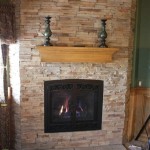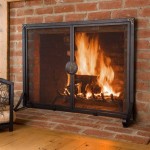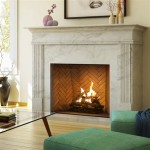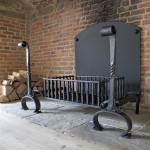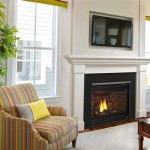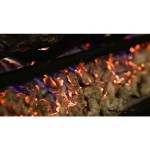Electric Fireplace Remote Not Working: Troubleshooting Guide
An electric fireplace offers the ambiance and warmth of a traditional fireplace without the mess and maintenance. A key component of the modern electric fireplace is the remote control, allowing users to adjust settings like temperature, flame height, and timer functions from the comfort of their seating. When the remote stops working, however, the convenience is lost, and troubleshooting becomes necessary. This article provides a systematic guide to diagnose and resolve issues with an electric fireplace remote control that isn't functioning.
Checking the Batteries
The most common cause of a non-functional electric fireplace remote is depleted or improperly installed batteries. This is the first and simplest troubleshooting step. The remote relies on battery power to transmit infrared (IR) or radio frequency (RF) signals to the fireplace receiver. Without sufficient power, the signal will be weak or non-existent.
To check the batteries, start by opening the battery compartment on the remote. This is usually located on the back of the remote and secured with a small screw or a sliding cover. Ensure the batteries are installed correctly, paying close attention to the polarity markings (+ and -). Incorrect battery placement will prevent the remote from functioning, even with new batteries.
If the batteries appear to be correctly installed, remove them and inspect them for signs of corrosion. Corrosion can build up on the battery terminals and inside the battery compartment, preventing proper electrical contact. If corrosion is present, clean the terminals with a cotton swab dipped in a small amount of rubbing alcohol or a specialized battery terminal cleaner. Allow the area to dry completely before reinserting the batteries.
Even if the batteries appear clean, it's advisable to replace them with a fresh set of batteries. Batteries can lose their charge over time, even when not in use. Using new batteries ensures that a sufficient power supply is being delivered to the remote. When replacing batteries, it is recommended to use the same type of batteries specified by the fireplace manufacturer. Using different battery types can sometimes lead to compatibility issues or reduced performance.
After replacing the batteries, test the remote by pressing a button, such as the power button or the temperature control. Observe the fireplace to see if it responds. If the fireplace still doesn't respond, proceed to the next troubleshooting step.
Verifying the Line of Sight and Obstructions
Many electric fireplace remotes use infrared (IR) signals to communicate with the fireplace receiver. IR signals require a clear line of sight between the remote and the receiver. Obstructions in the path of the signal can block or weaken the signal, preventing the fireplace from responding. Identifying and removing any obstructions is a critical step in restoring remote functionality.
Begin by visually inspecting the area between the remote and the fireplace. Look for any objects that might be blocking the signal. Common obstructions include furniture, decorations, plants, and even pets. Adjust the position of these objects to create a clear path between the remote and the fireplace receiver.
Consider the angle at which the remote is being used. IR signals are directional, meaning they travel in a straight line. If the remote is pointed at an angle away from the receiver, the signal may be too weak to reach the fireplace. Try pointing the remote directly at the receiver and testing it again. Experiment with different angles to find the optimal position for signal transmission.
External factors can also interfere with IR signals. Direct sunlight, fluorescent lighting, and other sources of infrared radiation can disrupt the signal and prevent the remote from working. Move the fireplace or remote away from these sources of interference, or try using the remote at a different time of day when interference is less likely.
The receiver on the fireplace itself can also be obstructed. Dust or debris can accumulate on the receiver lens, blocking the infrared signal. Use a soft, dry cloth to gently clean the receiver lens. Avoid using harsh chemicals or abrasive cleaners, as these can damage the lens.
Some electric fireplaces use radio frequency (RF) remotes, which are less susceptible to line-of-sight issues. However, RF signals can still be affected by interference from other electronic devices. If the fireplace uses an RF remote, try moving other electronic devices away from the fireplace to reduce potential interference.
Checking the Remote and Fireplace Receiver
If the batteries are new, the line of sight is clear, and the remote still isn't working, the problem may lie with the remote itself or the fireplace receiver. Both components need to be functioning correctly for the remote to control the fireplace. Diagnosing issues with these components requires a more advanced approach.
To test the remote, use a digital camera or smartphone camera. Many digital cameras can detect infrared light, which is invisible to the human eye. Point the remote at the camera lens and press a button. If the remote is transmitting an infrared signal, you should see a flashing light on the camera screen. If there is no flashing light, the remote may be faulty and need to be replaced or repaired.
If the remote is transmitting an infrared signal, the problem is likely with the fireplace receiver. The receiver may be damaged, disconnected, or not properly paired with the remote. Consult the fireplace owner's manual for instructions on how to pair the remote with the receiver. Some fireplaces require a specific sequence of button presses or a reset procedure to establish a connection between the remote and the receiver.
Check the wiring connections to the fireplace receiver. Ensure that all wires are securely connected and that there are no loose or damaged wires. If you find any loose or damaged wires, reconnect or replace them as necessary. If you are not comfortable working with electrical wiring, it is recommended to consult a qualified electrician.
Some electric fireplaces have a reset button or a power switch that can be used to reset the receiver. Consult the owner's manual for the location of the reset button or power switch. Turn off the fireplace, wait a few minutes, and then turn it back on. This may reset the receiver and restore remote functionality.
If the receiver is still not working after trying these steps, it may need to be replaced. Contact the fireplace manufacturer or a qualified repair technician for assistance. Replacing the receiver may require specialized tools and knowledge, so it is best left to a professional.
Addressing Remote Lockout or Programming Issues
Some electric fireplace remotes feature a lockout function, typically a button combination or a switch, that disables the remote to prevent accidental operation, especially by children. If the remote is locked, no buttons will function until the lockout is deactivated. The fireplace might also require re-programming of its remote, potentially due to a power outage or internal reset.
Review the fireplace's user manual to identify if the remote has a lockout feature. Instructions for activating and deactivating this feature are generally located in the remote-control operation section. The process commonly involves pressing and holding specific buttons simultaneously for a few seconds until an indicator light confirms the lockout status has changed.
If the electric fireplace experienced a power outage, or if the unit was recently serviced, the remote may require re-programming to function correctly. This establishes a new connection between the remote and the fireplace's receiver. The process for re-programming varies depending on the fireplace model, and the detailed instructions are nearly always provided within the user manual of the fireplace. Check specifically for sections on remote pairing, reset procedures, or initial setup.
Re-programming often involves entering a specific sequence of button presses on both the remote and the fireplace control panel within a limited time. This creates a new "handshake" or synchronized communication link between the two devices. Successfully completing the re-programming usually involves a visual confirmation on the fireplace’s display panel, such as flashing lights or a specific code display.
If repeated attempts to re-program the remote fail, it may indicate a deeper hardware or software problem with the fireplace receiver or the remote itself. In this scenario, contacting the manufacturer's customer support or a qualified fireplace service technician is advised. They possess the necessary expertise and diagnostic tools to isolate the problem and recommend the appropriate corrective action, which may involve replacement of a faulty component.
Investigating Electrical Interference and Voltage Problems
Electrical interference from nearby devices or fluctuations in voltage supply can negatively impact the function of an electric fireplace remote. Interference disrupts the signal transmission between the remote and the fireplace receiver, while voltage problems can cause the receiver to malfunction. Identifying and addressing these issues can restore the remote's functionality.
Examine the surrounding area for potential sources of electrical interference. Common culprits include other electronic devices, such as televisions, stereos, routers, and microwave ovens. These devices emit electromagnetic radiation that can interfere with the remote's signal. Try turning off these devices temporarily to see if it resolves the problem. If the remote starts working after turning off a specific device, that device is likely the source of the interference. In this case, move the interfering device away from the fireplace or use a shielded cable to reduce the amount of radiation it emits.
Power surges and voltage fluctuations can also damage the fireplace receiver and prevent the remote from working. These electrical events can occur during thunderstorms or when large appliances switch on and off. Install a surge protector to protect the fireplace from power surges. A surge protector will absorb excess voltage and prevent it from reaching the fireplace receiver.
Check the voltage supply to the fireplace. Use a voltmeter to measure the voltage at the electrical outlet. The voltage should be within the range specified by the fireplace manufacturer. If the voltage is too high or too low, it can damage the fireplace receiver and prevent the remote from working. In this case, contact a qualified electrician to inspect the electrical wiring and correct any voltage problems.
Grounding issues can also cause electrical interference and voltage fluctuations. Ensure that the fireplace is properly grounded. A properly grounded fireplace will have a three-prong plug and be connected to a grounded electrical outlet. If the fireplace is not properly grounded, it can be more susceptible to electrical interference and voltage problems. If you are unsure whether the fireplace is properly grounded, contact a qualified electrician for assistance.
In some cases, the electrical wiring in the home may be the source of the problem. Old or damaged wiring can cause electrical interference and voltage fluctuations. If you suspect that the electrical wiring is the problem, contact a qualified electrician to inspect the wiring and make any necessary repairs.

Electric Fireplace Remote Not Working Why How To Fix November 2024

Remote Control For Fireplace Inserts Outdoor Greatrooms

Replacement For Furrion Electric Fireplace Remote Control Model Listed

Napoleon Entice Remote Control W190 0182 Ser Friendly Fires

Sonata Electric Fireplace Remote Moda Living

Paramount Slim Line Remote For Electric Fireplace Inserts Part Blt Rc1

Cambridge 23 In Freestanding 5116 Btu Electric Fireplace Insert With Remote Control Cam23ins 1blk The Home Depot

Vitesse Electric Fireplace Remote Pack

Lghm 23 Electric Fireplace Insert Wall Mounted W Remote Control Adjustable Flame Com

Cambridge 50 In Wall Mount Electric Fireplace Black With Multi Color Flames And Crystal Rock Display Cam50wmef 1blk The Home Depot

